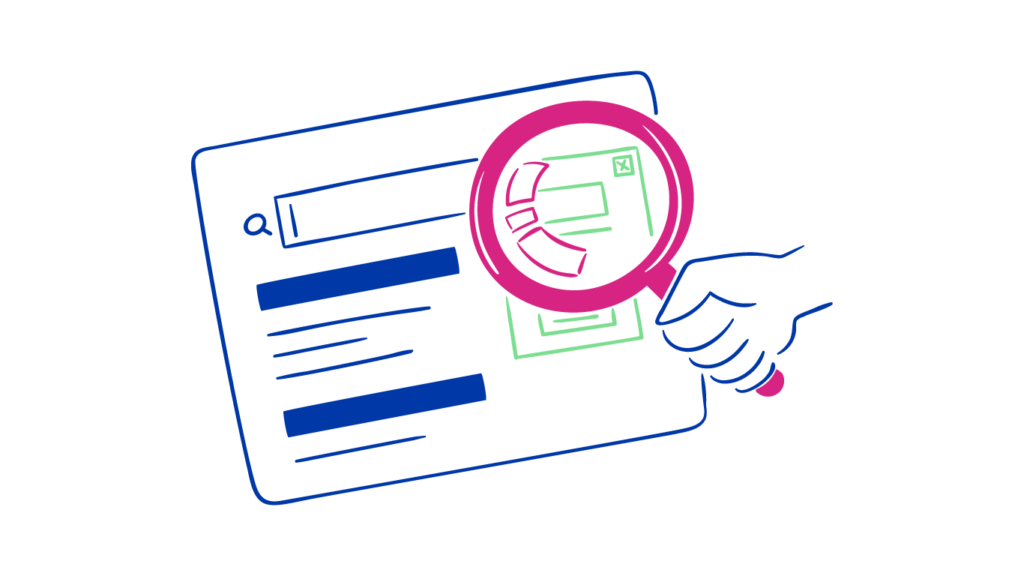How to Follow Up with a Sales Lead Like a Pro

With the success of your marketing team’s efforts, you’ve been blessed with a fresh batch of leads. Your job is to make sure those leads convert into paying customers. A large factor that comes into play here is your ability to effectively follow up on those leads after the initial point of contact. But how do you hit the right tone so you don’t end up sounding too pushy or coming across as apathetic?
Research has shown that around 60% of customers tend to say no (up to four times) before saying yes while 48% of sales reps never attempt to follow up at all. It’s understandable to feel like following up means you risk annoying them, but it’s actually necessary to fully engage your lead.
This article will explain how to follow up with a sales lead effectively and devise a sound strategy to optimise your sales process.
How to follow up with a sales lead
Here are the steps to ensure that you follow up with a sales lead the right way:
| Follow-Up Tips | Explanation |
| Respond quickly | The sooner you follow up on a sales prospect after initial contact, the better. Between 35% and 50% of sales go to the companies that either responded first or did so quickly. Speed demonstrates your commitment to helping the lead and keeps your product or service fresh in their mind. |
| Personalise your interaction | Do your research and make the effort to know about the lead, their company, interests, pain points and needs. Personalising your outreach approach can make the lead feel valued and understood. |
| Identify needs | Use a series of open-ended questions to verify if the lead has an actual need for your offering. Determine their primary issues and highlight how your product or service can help solve them. |
| Provide value | Position yourself as a valuable source of information related to the lead’s needs and industry. Even if it’s not directly about your product or service, it will show your expertise and willingness to help. |
| Communicate clearly | Make sure you present them with valuable information each time you follow up. Articulate the benefits of your product or service clearly, highlighting how they can solve the lead’s specific problem. |
| Overcome objections | Be prepared to handle any objections or concerns your lead might have. Anticipate common objections and have your responses ready. |
| Follow a schedule | Don’t just follow up once and then forget about your lead. Plan regular follow-ups to keep them engaged, but be careful not to sound pushy. |
| Track your interactions | Keep detailed notes on each interaction with a lead. Use CRM software to keep track of their information, past interactions and future plans. |
| Evaluate performance | Review your follow-up strategy periodically to determine what’s working and what isn’t. Adjust your methods depending on the response to improve your sales performance. |
| Close the deal | Once the lead is hot and ready, make your pitch and aim to seal the deal. However, it’s vital not to rush this delicate process and let the lead reach this stage at their own pace. |
When should you follow up with a sales lead?
When following up with a sales lead, timing matters a great deal. The general rule is that your follow-up pace should correlate to how qualified a lead is. You can utilise lead-scoring frameworks to help you figure out which leads are credible and worth following up on.
Since many companies have insufficient resources to respond to every lead instantly, it’s vital to use your judgement as well. As a good sales leader, you should have an idea of whom to contact immediately. Use your CRM software to set notifications every time a lead performs an action, such as opening your email, clicking a link or visiting your website.
If a lead responds to your CTA, it warrants an immediate follow-up message to initiate a two-way conversation. If you get no response, it means the lead needs nurturing before you can talk to them.
How often you contact a lead after the first point of contact is also pivotal for achieving sales consistency. It is recommended that you reach out six times before ruling out a lead entirely. You can incorporate different means of communication to ensure a response if the previous ones don’t get the job done. This can include emails, calls, social media, networking websites and even hand-written letters.
Devise a follow-up plan for unresponsive leads. While there is no one-size-fits-all approach, and you will have to work out what works best for your business and its potential clients, here is a general overview of what’s recommended:
| Follow-Ups | Timing |
| First | 2-3 days after the first email |
| Second | 4-5 days later |
| Third | A week later |
| Fourth | A week later |
| Fifth | Two weeks later |
| Sixth | Two weeks later |
If you still don’t get a response after the fifth follow-up, the next one should be your last. Send a breakup email as your sixth follow-up asking the lead to let you know if they are not interested in initiating a discussion. Hubspot’s senior sales manager reports that her break-up emails deliver a 33% response rate.
In any case, a definitive answer either way will help you close a sale or save you valuable time and encourage you to redirect your efforts to pursue other leads. Let the lead know that they can reach out at any time if they change their mind.

Common misconceptions about sales lead follow-up
Here are some common misconceptions that might be holding you back from effectively following up with your leads:
- Follow-up equals nagging: Many salespeople believe that repeated follow-ups can be perceived as nagging and annoying. However, while excessive communication can be off-putting when handled in the wrong way, a well-planned, respectful follow-up strategy is vital for engaging prospects.
- One size fits all: A common misconception is that one follow-up strategy will work for all leads. In reality, each lead is unique, and your follow-up approach should be tailored to their specific needs and preferences.
- The more leads, the better: While having a large number of leads may seem valuable, it’s the quality of leads and your ability to effectively follow up that count. It’s better to have fewer high-quality leads that you can catch up with than numerous low-quality ones that likely won’t respond.
- Immediate follow-up is always best: Some believe that immediate follow-up is the key to success. However, that’s not always the case. While promptness is important, the ideal follow-up timing can vary based on the lead’s circumstances, their activity and the nature of your product or service.
- Follow-ups should always aim for a sale: While closing a sale is the ultimate goal, not every follow-up may lead to an immediate sale. It’s about building relationships, providing valuable information and keeping your product or service top-of-mind for when the lead is ready to make a decision.
Additional techniques for effective sales lead follow-ups
Use these sound sales techniques to make your follow-up emails and calls more effective and improve your sales pipeline:

Leverage content marketing
Engage your lead with valuable information by sharing blog posts, white papers, case studies or webinar invites related to their industry and pain points. This is likely to position you as a thought leader and your brand as an authority in the lead’s mind.
Use video messages
Don’t shy away from standing out of the norm. Instead of a regular email or phone call, consider sending a personalised video message. This can give you a competitive edge and help you build a personal connection with the lead.
If appropriate, connect with your leads on social media platforms. Engage with their content and share information that could be valuable to them. This can help increase their awareness of your offering and build a stronger relationship.
Use surveys or feedback forms
Allowing feedback can help you gauge a lead’s interest level, understand their needs better and obtain insights that can be used to tailor your follow-up strategy.
Implement a multi-touch approach
It often takes multiple points of contact to convert a lead into a customer. A multi-touch approach, including follow-up emails, phone calls, social media engagement and in-person meetings, increases the likelihood of conversion.
Leverage testimonials and case studies
Use social proof to sway the lead. Share your success stories of satisfied customers to alleviate any concerns or doubts your leads may have about your and your company’s credibility.

Offer exclusive deals or discounts
Use incentives to amp up your follow-up strategy. Occasional special offers and exclusive discounts can encourage leads to take the next step.
Use retargeting ads
Based on the lead’s interaction with your content and their position in the buyer’s journey, use retargeting ads to remind them of the value of your product or service.
FAQs
How many times should I follow up with a sales lead?
The number of times to follow up with a sales lead can depend on various factors such as the industry, the nature of your product or service and the lead’s responsiveness. However, research suggests a rule of thumb of around five or six follow-ups after the initial contact. These touches can be spread over several weeks to avoid coming off as too pushy. It’s essential to note that persistence can pay off, but it must be balanced with respect for the lead’s time and interest.
What are some common mistakes to avoid in lead follow-ups?
Here are some common mistakes that sales reps make when following up with a lead:
- Generic messaging: Never send the same message to multiple leads. Personalise your communication based on each one’s specific needs and preferences.
- Poor timing: Not following up on time can make you lose leads to competitors. However, avoid following up too frequently so you don’t seem too intrusive.
- Not providing value: Make each follow-up count. Add new information to bring value to the lead by answering their queries or solving a problem.
- Neglecting to track follow-ups: Failing to record and analyse your follow-up activities can lead to missed opportunities and a lack of understanding of what’s working and what’s not.
- Ignoring objections or concerns: If a potential customer raises any objections or concerns, address them directly and honestly. Ignoring them will lower their trust in you and prevent them from moving forward.
What is the best way to follow up with a sales lead?
The best way to follow up with a sales lead is by responding quickly, personalising your interaction, identifying their needs and providing value. Be sure to communicate clearly, overcome objections, follow a schedule, track your interactions and assess your performance.
How can I personalise my follow-up?
Personalisation can be achieved by researching the lead’s company, industry and specific needs. Use this information to customise your interactions and show that you genuinely understand and care about their concerns.
How often should I follow up with a lead?
The frequency of follow-up depends on the lead’s interest level, their response to your previous interactions and the nature of your product or service. It’s essential to strike a balance and ensure your follow-ups are consistent but not intrusive.
How can I evaluate the effectiveness of my lead follow-up?
To evaluate your performance, track essential metrics like response rate, lead conversion rate and customer satisfaction. These will help you determine which strategies are working and which need adjustment.
How do I know when a lead is ready to close?
A lead may be ready to close when they start showing a strong interest in your product or service, ask about pricing and implementation or directly express a desire to purchase. However, this process can vary from lead to lead, so it’s important to pay attention to the signals each one gives.
Conclusion
Staying in touch with each lead can be a demanding process, but it’s vital to be consistent with your efforts. The key to an effective follow-up strategy is personalisation — make sure your message resonates with the lead’s key interests and concerns. Knowing how to follow up with a sales lead effectively can be a game changer for your overall performance.
Use fullinfo’s extensive database to find accurate and up-to-date information on your leads and enhance your follow-up strategy. Get started today.
References & further reading
- The Importance of Sale Follow-Ups – Statistics and Trends
- Here Are The Most Common Sales Objections + Rebuttals
- The Simple Guide To Sales Qualification Frameworks
- The Seven Defining Qualities Of A Good Sales Team Leader
- What You Need To Achieve Consistency In Sales Performance
- 7 Breakup Email Templates That’ll Get a Response Once and For All
- How to Dramatically Improve Your Sales Pipeline + Examples
- The Essential Sales Team Performance Metrics To Track